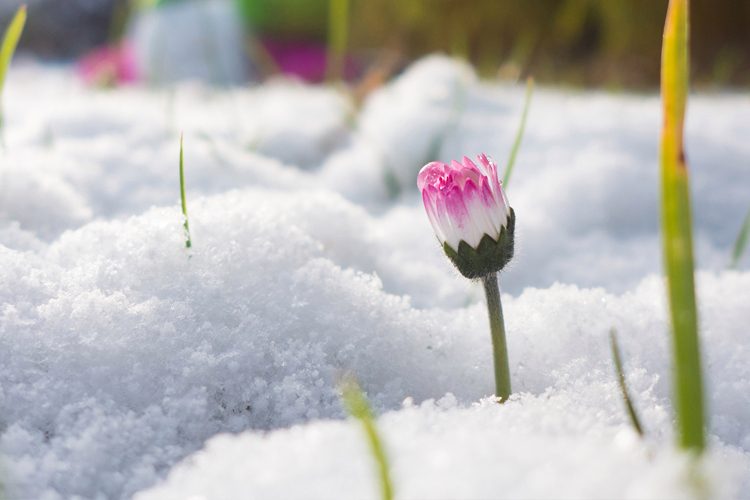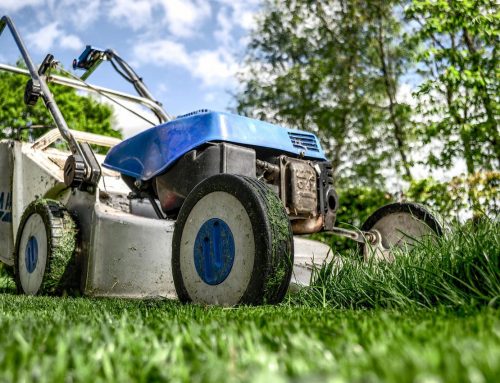One gardening tradition that few gardeners now follow is the ‘putting to bed’ of the garden for the winter. Many gardeners used to do all their final gardening jobs by the end of October or early November, and then not touch their plots until March. This is not now common practice amongst gardeners as gardening is seen as an all-year-round pastime .There are jobs to be done every month. Climate change means that we now have milder winter days, and many plants continue to flower well in to winter when in the past they stopped during autumn.
December is no exception, so let’s see what needs to be done in the month of the shortest and greyest of days. The weather can dictate which jobs can be done easily in all weathers, and which have to wait for the odd cold, crisp day.
Winter pruning can be done on most dry days. Shrubs and fruit trees that have lost their leaves will need to be pruned. The great thing is that in winter you can see what branches need to be removed. It’s a wonderful opportunity to reshape any wayward shrubs. Winter pruning will encourage new growth in the spring, so tackle the job with this in mind.
Bush roses can be pruned back to an outward facing bud on each stem. Shrub roses just need a light trim and the removal of any dead twigs. Overgrown shrub roses can be cut back hard which will stimulate new growth. Climbing and rambling roses only need to be tidied up. Tie in new growth to keep the plant in shape.
Take care when pruning ornamental trees or fruit trees. While they do need some attention, don’t be tempted to cut too much away. Fruit trees do benefit from a regular winter pruning which keeps them fruiting well.
You may be surprised to learn that cuttings can be taken in December. Some flowering shrubs that lose their leaves in winter – for example weigela – can be propagated by cuttings taken now. Take stems that have grown this year and cut them into pieces about 15cm long. Find a sheltered corner in your garden and add some grit to the soil. Pop the cuttings (make sure they are the right way up) into the soil with two-thirds of the stem in the soil. Leave them to grow and move them into a final position in early autumn.
December is also a good month to tidy up your garden. Look for any dead stems of herbaceous plants and remove them. Grasses can be tidied up now. Any fallen leaves that have not already cleared can be raked up. Don’t be tempted to be too tidy, most wildlife like places to hide and birds certainly enjoy foraging among dead leaves. Do pay special attention to clearing leaves from your lawn and from flower beds though, where you have delicate or vulnerable plants waiting to shoot in spring. It’s a good idea to have a place where you can dump these leaves to make leafmould.
Try not to walk or play on your lawn when it is wet. If you need to walk across your lawn, put down a plank to walk on. This is essential if you are wheeling a barrow across the lawn. Doing this avoids damage to the grass and the soil surface. Prevention now will make life much easier later in the year.
Garden centres still have plants for sale, especially cyclamen. For an instant display, use a large pot and plant up some of these lovely plants along with some ivy. The pot can then be positioned where you need some colour and interest.
Spend some time in your potting shed on the most inclement days. Make sure your pots, trays and containers are all clean, and anything damaged is dispatched for recycling. Dirty pots can harbour diseases and pests, so by cleaning them all you will save yourself some heartache in spring and summer.
One of the great joys of December is sitting by a warm fire with a drink and a piece of Christmas cake while you plan next year’s garden. Seed catalogues are filled with interest. Think about last summer – did you have successes of which you were proud? Were there failures? For example runner beans were poor in many gardens. Do you want to try something new?
Choosing the flowers and vegetables to grow next year is exciting. Make a list and then refine it as you decide whether to concentrate on annuals or perennials in the flower beds. Do you grow vegetables? Look at some new varieties that might crop more prolifically than your usual ones.
Above all enjoy December in your garden. This month is a time for reflection but also a time for celebration. Look ahead to next year with anticipation. It will be another great year in the garden.





Leave A Comment